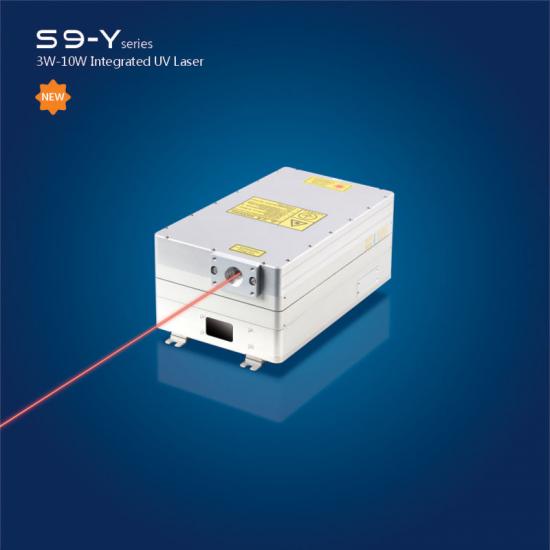Latest Blog
3W5W UV laser 3D printing SLA process is too amazing
Jul 28 , 2021
Nowadays, 3D printing is widely known. 3D printing is based on digital models to achieve high-precision printing of products. It has been efficiently used in jewelry, footwear, industrial design, construction, aerospace, medical and other fields.
In the field of 3D printing, SLA is a high-tech that is widely used in manufacturing. The full name of SLA is Stereo Lithography Apparatus (SLA—Stereo Lithography Apparatus), also known as additive manufacturing of photopolymerization molding technology.
What is SLA?

uv laser | green laser | Ultraviolet lasers | uv dpss laser | nanosecond laser | UV laser source | Solid State Lasers
Stereolithography 3D printing, often referred to as SLA for short, is one of the most popular and common technologies in the field of additive manufacturing. It works by using a high-power laser to harden the liquid resin in the container to produce the desired 3D shape. In short, the process uses low-power lasers and photopolymerization to convert photosensitive liquids into 3D solid plastics in a layer-by-layer manner.
This technology uses photosensitive resin as the raw material, and scans the liquid resin point by point with a computer-controlled ultraviolet laser according to the contour of each layered section of the predetermined part, so that the resin thin layer in the scanned area is photopolymerized, thereby forming the part A thin section.
When one layer is cured, move the workbench and apply a new layer of liquid resin on the surface of the previously cured resin for scanning and curing of the next layer. The newly cured layer is firmly bonded to the previous layer, and this is repeated until the prototype of the entire part is completed.
The history of SLA (stereolithography)
The term "stereolithography" is derived from ancient Greek. "Three-dimensional" and "(photo) lithography" mean "solid" and "light writing form" respectively.
As the oldest additive manufacturing technology, SLA is sometimes considered the "mother of all 3D printing technologies." It was developed by the American company 3D Systems, which was founded by Chuck Hull in 1986. Hull coined the term "stereolithography" in 1986. He defined this technology as a method of making 3D objects by continuously printing thin layers of ultraviolet curing.
In 1992, 3D Systems created the world's first SLA device, which can manufacture complex parts layer by layer in a small amount of time. SLA was the first to enter the field of rapid prototyping in the 1980s and continues to develop into a widely used technology.
Although the SLA light-curing 3D printing device was the first process developed for rapid prototyping and the earliest of the main 3D printing methods, it is still attractive for creating prototypes with high precision and durability solution.
Ruifengheng laser is widely used in SLA process
Ruifengheng 355nm ultraviolet laser products have been widely used in SLA process. Beginning in 2007, Ruifengheng has been intensively working in the field of 3D rapid prototyping. With the spirit of craftsmanship, it has launched generations of UV lasers for SLA technology. The product series is rich and the stability is excellent. It has provided a large number of customers at home and abroad. The UV laser has been recognized by many customers.
The principle of SLA processing is mainly to use a laser with a specific wavelength and intensity to focus on the surface of the light-cured material to make it solidify sequentially from point to line and line to surface to complete a level of drawing operation, and then the lifting platform moves a level in the vertical direction The height of the film, and then solidify another layer. In this way, the layers are superimposed to form a three-dimensional entity. How to control the wavelength and laser intensity is the key to the accuracy of the SLA process.
The Ruifengheng Expert II 355nm UV laser has a laser wavelength of 354.7nm, a wide range of repetition frequency (single pulse to 200kHz), and superior beam quality (M2<1.2), which is strictly guaranteed in all frequency ranges; pulse width <20ns@30k, the heat affected zone is very small during processing, which is very suitable for SLA process production.
SLA technology is currently being developed to improve processing accuracy, and in the future there will be greater breakthroughs in the fields of biology, medicine, and microelectronics. With the continuous changes in the processing market, today's business owners and consumers have increasingly higher requirements for product processing technology. In such a challenging market background, solid-state ultraviolet lasers will help SLA technology continue to become more economical and easy to use.